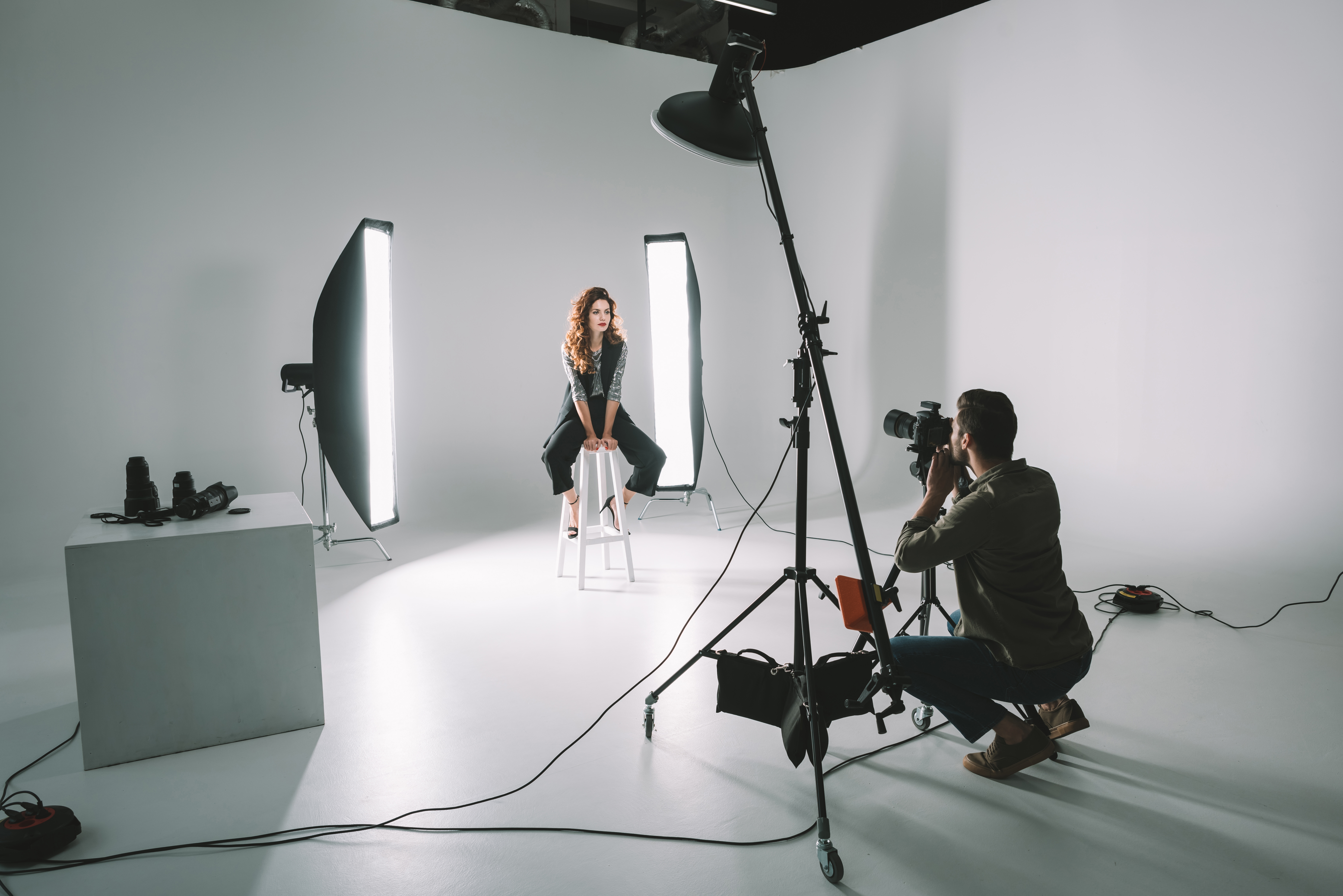Recent copyright cases highlight an interesting intersection of two significant tenets of law: a celebrity’s right of publicity in their own image and a photographer’s right to copyright their artistic work.
 Just two months after the end of her second copyright infringement lawsuit, fashion model Jelena Noura “Gigi” Hadid was sued for a third time, on September 13, for copyright infringement for posting paparazzi photos to her social media accounts without the license or permission of the photographer. Other celebrities, including Jennifer Lopez, Victoria Beckham and, most recently, Justin Bieber, have made news for the same situation. This trend falls into an interesting intersection of two significant tenets of law: a celebrity’s right of publicity in their own image and a photographer’s right to copyright their artistic work.
Just two months after the end of her second copyright infringement lawsuit, fashion model Jelena Noura “Gigi” Hadid was sued for a third time, on September 13, for copyright infringement for posting paparazzi photos to her social media accounts without the license or permission of the photographer. Other celebrities, including Jennifer Lopez, Victoria Beckham and, most recently, Justin Bieber, have made news for the same situation. This trend falls into an interesting intersection of two significant tenets of law: a celebrity’s right of publicity in their own image and a photographer’s right to copyright their artistic work.
Hadid Cases
Hadid was first sued for copyright infringement in 2017, when she uploaded to Instagram a photo of herself taken by photographer Peter Cepeda. Cepeda v. Hadid, 1:17-cv-00989-LMB-MSN (E.D. Va. 2017) Cepeda had properly registered his photo with the Copyright Office and subsequently licensed it through Instar Images to The Daily Mail and TMZ for use in their articles. Without license or permission of Cepeda, Hadid uploaded the photo to two of her social media accounts, receiving millions of likes. Due to her large following, various online publications copied and posted the photo crediting Hadid instead of Cepeda. Cepeda subsequently filed suit for violation of his exclusive rights of reproduction and distribution of his copyrighted work, but the case quickly settled out of court.
In what the plaintiff called a “nearly identical” case filed at the beginning of 2019, Hadid similarly copied and posted a paparazzi photo of herself, owned by Xclusive-Lee, Inc., to one of her social media accounts without license or permission from the copyright owner. Xclusive-Lee, Inc. v. Hadid, 1:19-cv-00520-PKC-CLP (E.D.N.Y. 2019). Aside from bringing the same claim as Cepeda, Xclusive also notes that Hadid had first-hand knowledge that what she was doing constituted copyright infringement since she had been sued for the same thing just two years prior. The district court dismissed this case due to a lack of a copyright registration, though Hadid’s legal team also raised the defenses of fair use and implied license. The second case may have begun paving the way for future legal challenges to clarify these issues by raising a novel argument—implied license—alongside the more typical defense of fair use. Perhaps the time has come for these arguments to finally be decided by the court since Hadid has been sued yet again—this time for posting a photographer’s copyrighted photo of her former boyfriend and singer/songwriter, Zayn Malik, without license or permission. O’Neil v. Hadid, 1:19-cv-8522 (S.D.N.Y. 2019). An initial pretrial conference is scheduled for January 14, 2020.
Implied License Defense
While an exclusive license must be in writing, a non-exclusive license can be verbal and an implied license may be “implied from conduct.” Graham v. James, 144 F.3d 229, 235 (2d Cir. 1998); see also 17 U.S.C. § 101. An implied license defense thus requires that an alleged infringer demonstrate that even without an express verbal or written agreement, the parties’ conduct indicates an intent to grant a license. Federal courts differ as to the precise requirements for an implied license and the cases typically are fact-specific. Compare Meisner Brem Corp. v. Mitchell, 313 F. Supp. 2d 13, 17 (D.N.H. 2004) (finding that a nonexclusive copyright license may be implied where the licensee: (i) requested the creation of the work; (ii) the licensor created the work and delivered it to the licensee; and (iii) the licensor intended the licensee to distribute the work) with Pavlica v. Behr, 397 F. Supp. 2d 519, 527 (S.D.N.Y. 2005) (finding a similar claim can be established by showing: (i) the copyright holder had knowledge of the defendant’s conduct; (ii) the copyright holder’s action manifesting its consent to the defendant’s action was intended to be relied on, or the defendant had a right to believe it was so intended; (iii) the defendant was ignorant of the true state of the facts; and (iv) the defendant relied on the copyright holder’s actions to its detriment).
In the Motion to Dismiss in the Xclusive case, Hadid’s attorneys argued that she “stopped to permit the photographer to take her picture and, by posing, contributed to the photograph’s protectable elements” (XClusive-Lee, Inc. v. Hadid). The court did not address this argument in its decision to dismiss the case, but it nonetheless raises intriguing questions for future cases. For example, by posing, whether Gigi Hadid “requested” the creation of the work; and by taking a picture of Hadid while she posed, whether the photographer “manifested consent to participate in their joint artistic work”; and finally, whether by then posting the photograph on social media, whether the photographer “delivered” it for Hadid’s use.
Co-Authorship
Though not pled, the language of the filing in the second Hadid case begins to lay the groundwork for an argument of co-authorship of copyright in the photograph. That is, that by posing, the subject contributed to the protectable elements and thus jointly created the work with the photographer. Indeed, the positioning of a subject of a photograph contributes to copyright ownership in a photograph. See Copyright Office Compendium §909.1 (“The creativity in a photograph may include the photographer’s artistic choices in creating the image, such as the selection of the subject matter, the lighting, any positioning of subjects, the selection of camera lens, the placement of the camera, the angle of the image, and the timing of the image.”). The question emerges, though, of whether the subject’s undirected and unique self-positioning would render the subject a co-author.The Copyright Act defines a joint work as one “prepared by two or more authors with the intention that their contributions be merged into inseparable or interdependent parts of a unitary work” (17 U.S.C. § 101). The typical standard for a joint work imposed by courts is fairly high, and requires an independently copyrightable contribution as opposed to mere participation. Childress v. Taylor, 945 F.2d 500 (2d Cir. 1991); Kyjen Co., Inc. v. Vo-Toys, Inc., 223 F.Supp.2d 1065, 1068 (C.D. Cal. 2002).
From the Hadid case, the question emerges of whether striking an undirected pose is sufficient to meet the requirement of inseparability or of an independent copyrightable contribution to create co-ownership interests. Further, whether the required intent of co-ownership is demonstrated by the subject striking a unique pose and the photographer capturing the pose.
Copyrightability of a Pose
Copyright laws protect pantomimes and choreographic works as long as they are fixed in a tangible medium of expression [17 U.S.C. § 102(a)(4)]. The Copyright Office defines “choreography as the composition and arrangement of a related serious of dance movement and patterns organized into a coherent whole” [Compendium (Third) § 805.1]. Examples of protectable choreographic works include “ballet, modern dance, and similar types of complex dances.” The Copyright Office will not extend protection, however, to “common place movement or gestures,” or “ordinary motor activities and athletic movements.” The Copyright Office has refused registration of yoga poses and sequences, general exercise routines, and poses that are so commonplace as to be part of the public domain. For example, a pose of a nude, pregnant woman in profile is part of the public domain. Leibovitz v. Paramount Pictures Corp., 137 F.3d 109 , 116 (2d Cir. 1998)
In deciding “whether a sequence of twenty-six yoga poses and two breathing exercises developed by Bikram Choudhury . . . is entitled to copyright protection,” the court concluded that “it is an idea, process, or system to which copyright protection may in no case extend.” Bikram’s Yoga Coll. of India, LP v. Evolation Yoga, LLC, 803 F.3d 1032, 1044 (9th Cir. 2015); see also 17 U.S.C. § 102(b). Similarly, in the case of Michael Jordan’s iconic jump, the pose itself was not protected, but instead only the photographer’s expression, such as the selection and arrangement of the photograph, was protected. Rentmeester v. Nike, Inc., 883 F.3d 1111, 1119 (9th Cir. 2018).
If courts have denied protection to yoga poses and Michael Jordan’s iconic Nike pose, it is likely an uphill battle for a celebrity to claim sufficient copyrightable contribution in their pose, however unique.
The Practical Copyright Solutions: Settle or Hire Your Own Photographer
Other celebrities have faced similar situations but have mostly settled out of court and therefore the legal underpinnings of their defenses have not been wholly evaluated. Jennifer Lopez was faced with a claim by photographer Michael Stewart for posting one of his pictures of herself to one of her social media pages without a license or permission. Stewart v. Lopez, 1:18-cv-12019-KPF. Though her legal team claimed a fair use defense, amongst others, the case ultimately settled out of court. Similarly, Versace was sued for posting a photo of Jennifer Lopez taken by professional photographer Robert Barbera. Barbera v. Versace USA, Inc., 1:19-cv-03563 (S.D.N.Y. 2019). This case also quickly settled out of court. Most recently, in a lawsuit that lasted a whole two days before being settled, Victoria Beckham was sued for posting a photo of herself to her Instagram story. Ramales v. Victoria Beckham Inc., et al., 1:19-cv-08650 (S.D.N.Y. 2019)Others are seeking to avoid litigation altogether by hiring their own social media photographers. If you have been keeping up with the Kardashians, you know that in 2017 Khloe Kardashian was the first of the famous sisters to be sued for copyright infringement after posting a paparazzi picture on a social media account. Xposure Photos UK Ltd. v. Khloe Kardashian et al, 2:17-cv-03088-DSF-MRW (C.D. Ca. 2017). Khloe Kardashian took to Twitter to complain about the settlement amount. She was also upset to find out that fan accounts were being taken down for reposting her paparazzi photos. The sisters believed that a fair use defense applied at least to the fan accounts for reposting content. Sister Kim Kardashian came up with a solution – she hired her own social media photographer and gave her fans permission to repost the photos. She Tweeted, “[S]ince the paparazzi agencies won’t allow the fans to repost, all of my pics are taken by my own photog and you guys can always repost whatever you want. If I ever post from an agency I will tag them and I have permission. So those please don’t repost!” Apparently, modern problems require modern solutions.
Right of Publicity Counter Claims
A right of publicity counterclaim has also been used to combat these paparazzi lawsuits. Generally speaking, the right of publicity allows that a person has a right to protect and control the use of their likeness in commercial settings. In 2018, NFL player Odell Beckham Jr. sued the photo agency, Splash News & Picture Agency, and claimed the agency “attempted to extort $40,000 from Beckham for allegedly posting a picture of himself on his own social media account.” Beckham V. Splash News and Picture Agency, LLC et al., 2:18-cv-01001-JTM-JCW (E.D. La. 2018). Beckham claimed that the photographer violated his right of publicity and right of privacy by taking photos of him in his driveway and subsequently selling them to the photo agency without Beckham’s knowledge or consent. He also claimed that the agency’s act of licensing the unauthorized photos to other websites is in violation of his right of publicity. After a year of back and forth, the parties settled out of court.
Uncharted Waters?
The fraught relationship between celebrities and paparazzi has existed for decades, but the rise of social media as a ubiquitous part of how celebrities interact with their fans places everyone involved in uncharted legal waters. Despite the number of occasions on which this scenario has arisen, the cases have been largely settled out of court or decided on a pleading deficiency. Until we see a decision that helps shape the space, all sides can and will continue taking steps to protect their legal rights. Celebrities can seek more explicit license from the photographer or consider hiring social media photographers, as Kim Kardashian did, if they want to share photos of themselves in that space, and photographers can ensure that their works are registered if they want to enforce in court. We eagerly anticipate developments in this novel—and yet somehow not new at all—area of copyright law.
Image Source: Deposit Photos
Image ID: 166507128
Copyright: AllaSerebrina

![[IPWatchdog Logo]](https://ipwatchdog.com/wp-content/themes/IPWatchdog%20-%202023/assets/images/temp/logo-small@2x.png)



![[Advertisement]](https://ipwatchdog.com/wp-content/uploads/2024/04/UnitedLex-May-2-2024-sidebar-700x500-1.jpg)
![[Advertisement]](https://ipwatchdog.com/wp-content/uploads/2024/04/Artificial-Intelligence-2024-REPLAY-sidebar-700x500-corrected.jpg)
![[Advertisement]](https://ipwatchdog.com/wp-content/uploads/2024/04/Patent-Litigation-Masters-2024-sidebar-700x500-1.jpg)

![[Advertisement]](https://ipwatchdog.com/wp-content/uploads/2021/12/WEBINAR-336-x-280-px.png)
![[Advertisement]](https://ipwatchdog.com/wp-content/uploads/2021/12/2021-Patent-Practice-on-Demand-recorded-Feb-2021-336-x-280.jpg)
![[Advertisement]](https://ipwatchdog.com/wp-content/uploads/2021/12/Ad-4-The-Invent-Patent-System™.png)






Join the Discussion
No comments yet.